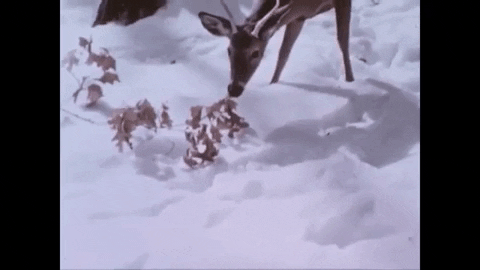By KRISTEN J.
DeMORANVILLE/ecoRI News contributor
 Christian Floyd, a
natural-resource scientist at the University of Rhode Island, spotted an
unusual white-tailed deer carcass while birding on the South County Bike Path
in mid-January.
Christian Floyd, a
natural-resource scientist at the University of Rhode Island, spotted an
unusual white-tailed deer carcass while birding on the South County Bike Path
in mid-January.
Floyd went into the
woods for a closer look at the carcass. His inspection revealed that this
wasn’t a hunting fatality or natural death; the deer’s stomach looked as if it had exploded.
The animal’s stomach was enlarged and bursting open with partially digested corn grains.
The cause of the deer’s death was familiar to Floyd, who recalled a scene from his childhood,” I knew that rumen acidosis was responsible because my favorite goat, Maria, succumbed to the same fate after devouring the chicken feed.”
The animal’s stomach was enlarged and bursting open with partially digested corn grains.
The cause of the deer’s death was familiar to Floyd, who recalled a scene from his childhood,” I knew that rumen acidosis was responsible because my favorite goat, Maria, succumbed to the same fate after devouring the chicken feed.”
Ruminants, including
deer, goats, and cattle, are a group of animals named after their specialized
digestive system that allows them to eat large amounts of nutrient-poor plant
material such as grass and woody shrubs.
In this specialized digestive system, food first enters a chamber called the rumen, which is home to the microbial community — bacteria, protozoa, and fungi — solely responsible for breaking down the large quantities of ingested fibrous plant material.
In this specialized digestive system, food first enters a chamber called the rumen, which is home to the microbial community — bacteria, protozoa, and fungi — solely responsible for breaking down the large quantities of ingested fibrous plant material.
Shifting away from their
normal fibrous diets can disrupt a ruminant’s microbial community and have
fatal consequences, a process called rumen acidosis, which
occurs when a ruminant suddenly gorges on carbohydrate-heavy meals of corn or
other grain.
In response to this meal, the number of carb-feasting microbes in the rumen dominate the microbial community to cope with the carbohydrate overload. These carb-feasting microbes ferment the ingested corn causing a build-up of lactic acid. The lactic acid lowers the pH of the rumen, causing an acidic environment that destroys the animal’s ability to digest and absorb nutrients.
In response to this meal, the number of carb-feasting microbes in the rumen dominate the microbial community to cope with the carbohydrate overload. These carb-feasting microbes ferment the ingested corn causing a build-up of lactic acid. The lactic acid lowers the pH of the rumen, causing an acidic environment that destroys the animal’s ability to digest and absorb nutrients.
At this stage, an animal
will stop feeding because its gut is too full. However, the animal is
functionally starving because of its inability to process the leftover corn
present in the rumen.
At the same time, the excess lactic acid leaks from the rumen into the animal’s bloodstream, damaging cells and tissues throughout the body. Muscle groups are usually too damaged to function, and an animal may be seen staggering or unable to stand.
At the same time, the excess lactic acid leaks from the rumen into the animal’s bloodstream, damaging cells and tissues throughout the body. Muscle groups are usually too damaged to function, and an animal may be seen staggering or unable to stand.
Rumen acidosis causes
the animal’s death within one or two days of its grain-heavy meal.
Dylan Ferreira, a senior
wildlife biologist with the Rhode Island Department of Environmental
Management’s Division of Fish and Wildlife, noted that rumen acidosis is a
concern for Rhode Island’s white-tailed deer population. He said it’s one of
the reasons why the state informs people not to feed or bait deer.
Feeding white-tailed
deer can be detrimental to entire populations, since feeding can cause large
congregations of deer that facilitate the spread of contagious diseases such as
chronic wasting disease.
Feeding wildlife can be
tempting because it creates seemingly special wildlife viewing opportunities.
However, feeding white-tailed deer often harms these animals by disrupting
their natural diet and altering their normal behavior.
Kristen J. DeMoranville
is a Ph.D. candidate in the Physiological Ecology, Natural Resources Department
at the University of Rhode Island.